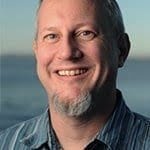Exploit the full potential of the " Four Opens


OpenStack is a huge and growing open source community with thousands of contributors from hundreds of organizations serving more than 60,000 members.
But what really sets OpenStack apart are the individual people and the ways we work together.
However, before I explain how this collaboration works, I would first like to mention why we work together.
Of course, we are committed to users tackling new markets, such as network functions virtualization (NFV), bio and physics research, financial services and healthcare.
You want to connect your phone calls, run your Internet applications, and deliver your packages on time. If we want to power the next generation of these industries, we need to transcend existing boundaries and make OpenStack the most flexible and reliable cloud platform in the world.
We need to support different network models and thus, for example, also connect and integrate old and new technologies.
Such an ambitious task cannot be solved by one company, one country or one person alone. One such feature, which the telecom giants had already longed for in the previous OpenStack versions, is so-called "VLAN-aware virtual machines (VMs)".
This critical feature will enable enterprises to run their existing virtual network functions (VNF) in an OpenStack cloud and deliver traffic with one VLAN per tenant.
Since Newton on board
Since the Newton version, this feature has been a reality. Many aspects of OpenStack had to evolve to support such an application: From command line clients to brokers (agents), from the data model to the database layer, from the community itself to the Neutron server.
In total, more than 50 employees from 20 organizations in 15 countries wrote and reviewed the program code required for this.
At OpenStack, we do things a little differently. No surprise announcements on big stages, no new features developed secretly at one company.
With us, this all happens openly. Not just in terms of source code - but everything. While Isaac Newton is famous for his three laws of physics, we hope that one day all open source programs will follow our notion of "Four Opens", that is, these four laws of open collaboration: open source, open design, open development, open community.
Open source is best known - but what sets OpenStack apart from other approaches is its open design, open development and open community. That's the really important characteristic of OpenStack.
At the beginning, the specification process was led by Bence Romsics, software engineer at Ericsson, and Russell Bryant, OpenStack technical director at Red Hat.
Both were assisted by the head of the project group, Armando Migliaccio, who then assembled a flexible team of competent experts around the world.
What is ultimately the result of our commitment to the Four Opens?
It allowed OpenStack to integrate with the VLAN environments that are absolutely common in today's trillion-dollar telecom industry, giving us a feature that will one day enable billions of mobile phone calls worldwide.
So today, when you make a cell phone call from Beijing to Barcelona or from Boston to Bangalore, remember the four laws of open collaboration and the many engineers whose work makes it possible: Experts from Brazil, Canada, China, Czech Republic, Hungary, India, Ireland, Israel, Italy, Japan, Poland, Russia, Spain, United Kingdom and the United States.





